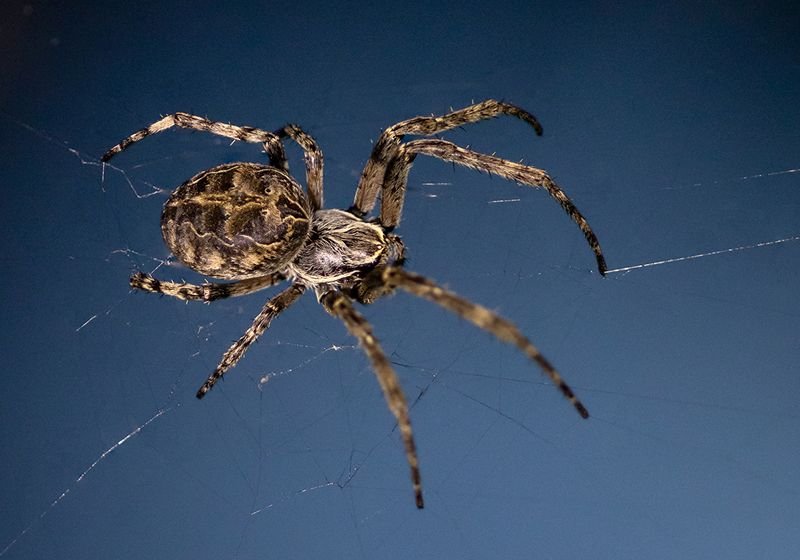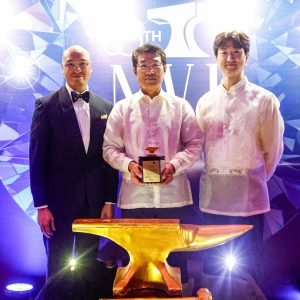
Stronger than steel and more eco-friendly than plastic, spider silk is an alluring substance for material scientists.1 However, researchers know little about the proteins that comprise it and how they come together to produce tough fibers, making it challenging to design a synthetic polymer.2 “The artificial spider silk that we create in the lab is not as good in terms of mechanical properties as the silk that a spider is producing,” says Johan Reimegård, a bioinformatician at Uppsala University.
In a recent study in Science Advances, Reimegård and his colleagues characterized how spiders spin their silk, revealing that separate zones of the silk gland secrete different proteins onto the fibers in layers.3 Their discoveries into the silk-weaving strategy of spiders could improve artificial silks.
Researchers don’t know enough about spider silk structure and composition to understand why it possesses such superior mechanical properties. For answers, Reimegård and his team turned to a local spider species: the Swedish bridge spider (Larinioides sclopetarius). “Especially in Uppsala, where most of this research has been done, if you pass a bridge during the summer and autumn, you will find hundreds of them,” Reimegård said.
The researchers began by sequencing the spider’s genome to retrieve all of its protein-coding genes. Next, they needed to work out which genes were important for the production of spider silk, but the Swedish bridge spider produces eight varieties of silk. To narrow their investigation, they focused on the major silk type, which makes up the radial threads of the web. Using mass spectrometry, the team identified 18 proteins in the major silk fibers, including six not previously linked to spider silk.
Although the team identified the fiber’s protein ingredients, they lacked the recipe to produce the silk. In spiders, silk forms by traveling through a long, tube-shaped gland, so the researchers hypothesized that cells located in separate zones in the gland secrete different proteins, similar to how factories build products by adding parts together in a sequence as they move along a conveyor belt. Using single-cell RNA sequencing, Reimegård and his team found that cells located at the beginning of the gland secrete different proteins from cells in downstream zones, suggesting that proteins mix into the silk at different stages of production.
“The location of the expression of those proteins is highly compartmentalized, which was never strongly stated in previous publications,” said Kazuharu Arakawa, a systems biologist at Keio University who was not involved with the work. “That could be evidence that silks are layered.”
To further explore protein layering, the team treated the fibers with different concentrations of urea, a protein-stripping chemical.4 While low doses caused only a few proteins to detach and dissolve, higher doses caused more proteins to separate from the fibers. Arakawa cautioned that the urea experiment provided only indirect evidence for protein layering. He argued that future experiments should try to directly observe these layers by capturing silk cross-sections using electron microscopy.
Researchers hope that artificial spider silk could one day replace non-renewable materials, such as steel or Kevlar. For example, bioengineers have used spider silk for suturing at the cellular level.5 “If you cut a nerve and then string it together with spider silk, it can grow back,” Reimegård noted.
Spider silk may also serve as a sustainable alternative in the manufacturing of plastics.6 “Sixty percent of current fast fashion uses nylon or polyester, which are made up of oil, so they form microplastics in the washing machine, and those microplastics eventually flow down to the ocean,” Arakawa said. Spider silk could decrease the demand for oil and be used to create biodegradable plastics that incur less pollution to ocean environments, he noted. Additionally, due to its shock-absorbing properties, Arakawa suggested that engineers could incorporate it into cars to reduce damage during crashes or use it to protect phone screens.
The research findings have given Reimegård’s team several ideas about how to improve artificial silks. “[We want] to see what happens if we mix or add in some of the proteins that we discovered into the artificial spider silk and see how that affects the mechanical properties,” Reimegård said. Another factor to consider is the layering effect. “We would like to spin artificial spider silk that contains multiple layers to hopefully improve our mechanical properties,” he added. However, Reimegård noted that they are still unsure how much of each ingredient is needed to spin their artificial silk. For future research, Arakawa suggested comparing different silk fibers from multiple species to find other ideas for improving the recipe.
Disclosure of Conflicts of Interest: Johan Reimegård is an inventor on a patent application (serial number SE 2450315-3) for artificial silks related to work in this study. Kazuharu Arakawa was the dissertation defense opponent of the first author Sumalata Sonavane.
- Li J, et al. Spider silk-inspired artificial fibers. Adv Sci. 2022;9(5):2103965.
- Rising A, Johansson J. Toward spinning artificial spider silk. Nat Chem Biol. 2015;11(5):309-315.
- Sonavane S, et al. Origin, structure, and composition of the spider major ampullate silk fiber revealed by genomics, proteomics, and single-cell and spatial transcriptomics. Sci Adv. 2024;10(33):eadn0597.
- Stumpe MC, Grubmüller H. Interaction of urea with amino acids: Implications for urea-induced protein denaturation. J Am Chem Soc. 2007;129(51):16126-16131.
- Kornfeld T, et al. Spider silk nerve graft promotes axonal regeneration on long distance nerve defect in a sheep model. Biomater. 2021;271:120692.
- Chang Z, et al. Fabrication of spider silk-inspired bio-based polymeric materials under dynamic nanoconfinement as high-strong, ultra-tough, and multifunctional plastic substitutes. Chem Eng J. 2023;457:140984.







